by Jessica Kosinski
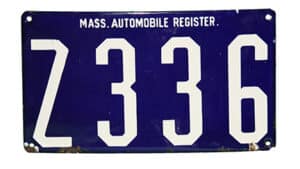
There are many automobile-related collectibles people enjoy collecting. People have had fascinations with cars since the first ones were produced. Today, there are collectors of cars themselves, car-related advertising, hood ornaments, and more. However, in this month’s column, we are going to take a peek at collecting something else entirely, license plates. License plates have a surprisingly rich and diverse history, which is definitely worth delving into.
Why Were License Plates Important?
Early cars did not initially need license plates. However, as more and more vehicles were issued, certain problems began to develop – horse and buggy drivers were often given preferential treatment; vehicle owners traveling between towns often encountered completely different rules of the road from one town to the next. The establishment of uniform rules and license plates helped to eliminate such issues to ease the traffic flow. They also served one of the same purposes they still do today, which was helping to identify drivers.
When Were the Earliest License Plates Produced?
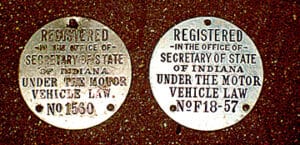
Today, we think of license plates as staples on all vehicles – cars, trucks, vans, tractors, etc. This was not always the case. The invention of the car dates back to the 1880s but it was not until 1893 that the first license plates with numbers were issued. That took place in France. Here in the United States each state and territory had its own timeline and procedures for issuing license plates. The first license plates were required in New York starting in 1901, but vehicle owners were expected to make their own. It took until 1909 for the state of New York to begin issuing standardized plates.
License Plates Haven’t Always Looked the Same
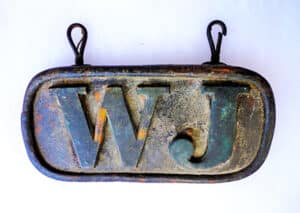
License plates issued in different countries, or even in the same country during different decades, can look completely different from one another. For example, modern European license plates and those issued here in the United States have different shapes.
The materials used to make the plates and information contained on them also varied by time period and location. For example, Massachusetts used to issue porcelain license plates starting in 1903. Meanwhile, in 1928, Idaho became the first U.S. state to feature a motto on its license plates. Such differences are part of what makes collectors so interested in license plate collections.
License Plates Were Influenced by World Events
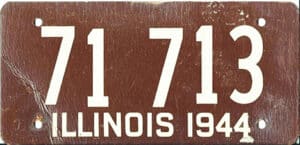
Many world events have also influenced the shape, size, materials, and content of license plates over the years. One of the best examples occurred in 1944. When World War II broke out, metal shortages became common. As a result, license plates had to be produced using everything from cardboard to plastic. Obviously, such materials are not as long-lasting and resilient as metal and these license plates can be difficult to find today.
Standardization of License Plate Sizes
There was no standardization of license plate sizes until 1957. Standards were developed after a meeting was held that year between many world organizations. To this day those standards differ in certain regions depending upon the guidelines adopted.
In the U.S. every license plate has been the same size since that year. For that reason, many pre-1957 license plates are quite desirable because they often have unique shapes and sizes.
The North American Vanity Plate
Another type of desirable license plate is the vanity plate. The term “vanity plate” refers to plates requested by drivers to have specific letters or numbers. A driver can use a vanity plate for purposes like paying homage to a favorite movie star or sports team.
There are some restrictions as far as what is allowable for content, such as the fact that vanity plates cannot usually contain obvious obscenities and are restricted as far as how many letters/numbers will fit on the plate. Today, we take vanity plates for granted, but they were not allowed in the United States until 1965.
Rare Versus Common License Plates
License plates come in differing degrees of rarity for many reasons. A particular material might have been rare during a certain time, such as metal throughout World War II. License plates from a certain area can also be rare due to a lack of vehicles in that area at the time. In the earlier days of automobile use, Alaska had a very low population of drivers. For that reason, early Alaskan license plates are almost non-existent today.
The type of vehicle the plate was issued also makes a difference. Car license plates are often easier to come by than plates for farming equipment or other specialty vehicles, such as police cars.
License Plate Collection Organizations
There are organizations of license plate collectors found all over the world. One of the biggest is the Automobile License Plate Collectors Association or ALPCA. It was founded in 1954 right here in the United States. Members of ALPCA and other similar organizations often offer consulting services for movie and television producers, as well as the police. Their knowledge of license plate history can help identify vehicles in images and help maintain authenticity in films and television shows.
What to Know About Collecting License Plates
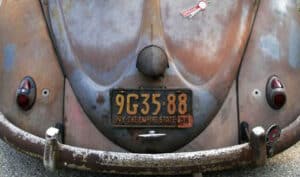
There are a lot of things to know about collecting license plates. If you want to get into the hobby, it’s best to learn from experts like those at ALPCA or at least do some online research. It is important to learn about different license plate quirks to watch for.
You may also find it useful to start by deciding how you want to shape your collection. Do you want to only collect license plates from the year you were born? Are you interested in plates from a particular state? Do you want to collect only vanity plates? Those are the types of questions you may want to ask yourself. On the other hand, it’s also perfectly acceptable to just browse antiques shops and flea markets for budget-friendly license plates that look good to you.
Jessica Kosinski has been a freelance writer specializing in writing short articles for 15 years. She is also an avid collector of antique books and Star Wars memorabilia. Although she is not in the antiques industry professionally, she learned about antiques over the years by periodically helping out at her mom’s antiques shop in Greenville, NH. She currently balances maintaining the antiques shop’s Facebook page, www.facebook.com/MallofNE, and working on various freelance writing assignments. She can be reached at dementorskiss77@yahoo.com.





Related posts: